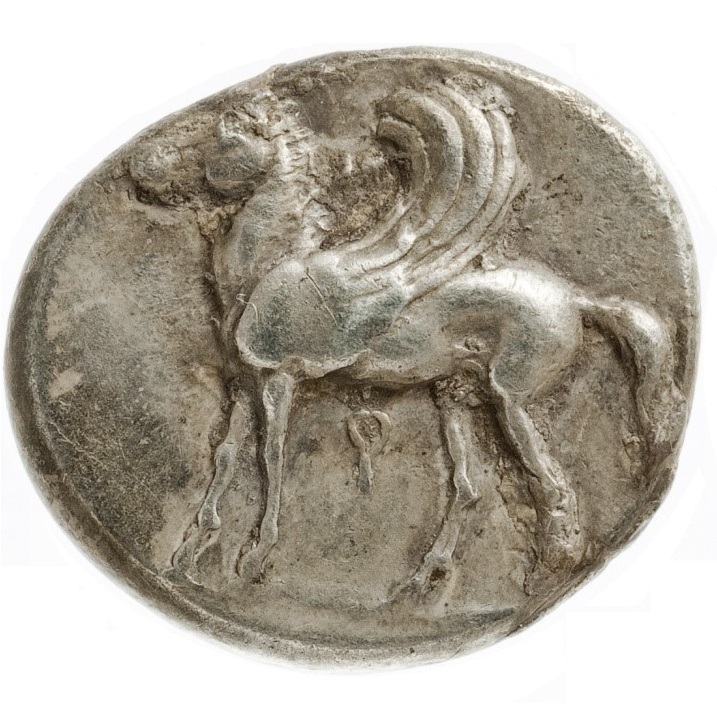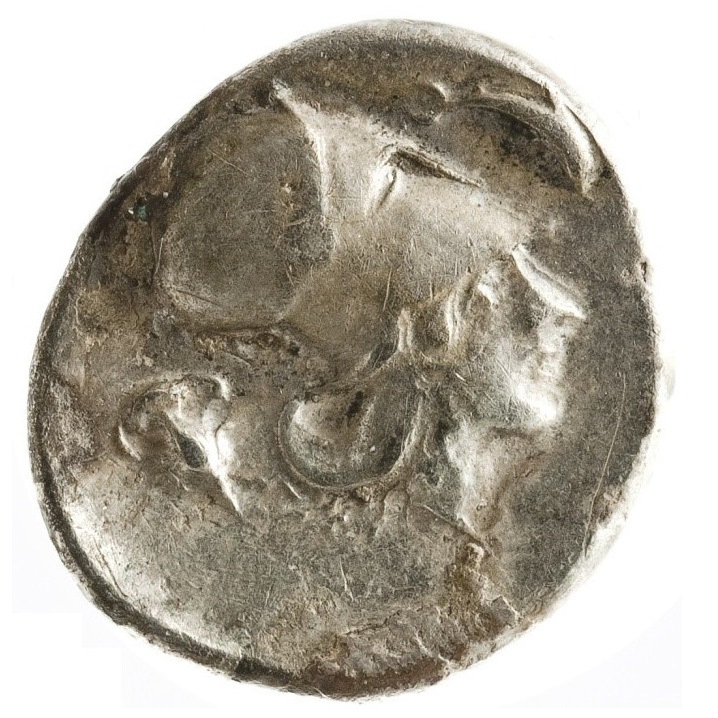Title: Stater of Corinth - 1967.15
Acquisition number: 1967.15
Acquisition source or name: Münzen und Medaillen, Basel
Acquisition year: 1967
Owner type: ANU Classics Museum
Author or editor: Douglas Kelly
Culture or period: Classical Greece.
Date: c. 400 - 360 BC.
Date century or Timeline (notional): 499 to 300
Material: Metal - Silver
Object type: Coins - Greek
Dimensions: 21mm (w)
Origin region or location: Greece
Origin city: Corinth.
Display case or on loan: 5
Collection history: Purchase
Keywords: Coin, Greek, Corinth, stater, Pegasos, Pegasus, Athena
SNG Copenhagen = Sylloge Nummorum Graecorum, Copenhagen, The Royal Collection of Coins and Medals, Danish National Museum, repr. edn (West Milford, NJ, 1981-), 44.
Classical Numismatic Group Auction, 76 lot 3055.
1967.15
Stater of Corinth
Silver 8.35 g. 21 mm. c. 400-360 BC.
Obv.: Winged Pegasos walking l. Below, koppa (ϙ).
Rev.: Head of Athena r., wearing Corinthian helmet; dolphin in front, and another symbol behind.
The obverses of classical Greek coins so often show the heads of deities that the winged Pegasos on the obverse (rather than the reverse) of the coinage of Corinth might seem an oddity. Examination of such coins reveals to the expert eye that the Pegasos die was in the top position when the coins were struck. This indicates that the Pegasos side is the obverse. The earliest Corinthian staters have Pegasos on the obverse, while the reverse had an incuse pattern of the ‘Union Jack’ or ‘Swastika’ type. The addition of Athena’s head to the reverse, beginning towards the end of the sixth century BC, is the one major change in the silver staters of Corinth, which circulated widely outside Corinth and were stable in design, just like the ‘Owls’ of Athens (cf. 2014.02). Because Athena helped Bellerophon tame and use Pegasos, the goddess is a common reverse on Corinthian coins.
SNG Copenhagen = Sylloge Nummorum Graecorum, Copenhagen, The Royal Collection of Coins and Medals, Danish National Museum, repr. edn (West Milford, NJ, 1981-), 44.
Classical Numismatic Group Auction, 76 lot 3055.
1967.15
Stater of Corinth
Obverse: winged Pegasus;
Reverse: head of Athena, wearing a Corinthian helmet.
c. 400 - 360 BC.
Münzen und Medaillen, Basel; approx. 22/3/67, no. 6.

